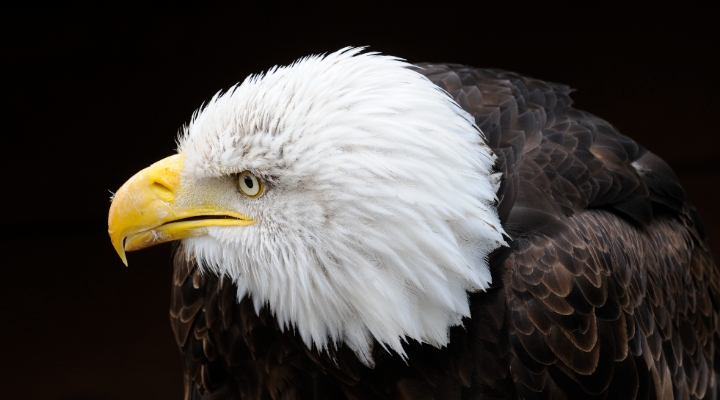For some 25 years, Yale's endowment has been its industry's shining city upon a hill, demonstrating to the masses the brilliance of institutional investing. Its chief investment officer, David Swensen, has become something of a celebrity, authoring a well-received how-to guide for everyday shareholders, as well as the occasional Op-Ed column.
The fund's reputation, however, owes to its earlier accomplishments. In the 10 years from mid-2008 through mid-2018 (the latter being the date of the fund's most recent report), Yale gained an annualized 7.4%. During that same time period, the three largest target-date 2035 mutual funds, from Vanguard, Fidelity, and T. Rowe Price, returned 7.3%, 6.7%, and 8.0%, respectively.
In other words, employees who barely even realized that they owned funds, because they had been defaulted into their 401(k)s, roughly kept pace with the nation's most-celebrated endowment portfolio. (As, of course, did those who selected their target-date funds intentionally.) Few would have anticipated such an outcome when Swensen's book was published in 2005.
U.S. Stocks Better
Fewer yet would have predicted that the S&P 500's cumulative profits would be half again above Yale's. Over that decade, the index appreciated by 160% (including the effects of dividend reinvestments), while Yale's endowment portfolio rose by 104%. That works out to 10% annualized for the benchmark, as opposed to the previously mentioned 7.4% for the university's fund.
The year-by-year totals appear below. Yale beat the benchmark by 400 basis points during fiscal 2015 (that is, the 12-month period ended June 30), and dropped slightly less--although still quite far--during the financial crisis. That was the good news for the endowment, relatively speaking. It trailed the S&P 500 in each of the remaining eight years, including large gaps of 800 basis points in 2011 and again in 2013.
I wondered whether those 12-month chunks--which is all the information Yale provides about its returns--disguised a difference in volatility between the two investments. Perhaps Yale's endowment was much less turbulent, which would improve its performance when risk-adjusted. And yet, in its most recent report, Yale states that it expects its portfolio's standard deviation to be just north of 14%. From mid-2008 through mid-2018, the S&P 500 registered 14.7%.
Thus, no matter how one massages the data, it suggests that Yale's fund didn't produce anything that the masses couldn't have attained on their own. Indeed, by holding a portfolio that consists in essence of 1) securities that behave like the S&P 500 (an index fund, such as Vanguard Total Stock Market ETF (VTI); Berkshire Hathaway (BRK.B)) and 2) Morningstar (MORN) equity, which fared better yet, your author has blitzed Yale's fund over the trailing decade (although not so much when 2008 is considered, as Morningstar lost 60% that year).
Swimming Upstream
This illustrates that, even for lengthy periods, luck can overwhelm skill. Despite its relative performance, Yale's fund continues to impress.
For one, it has fulfilled its primary mission, by disbursing a healthy percentage of its assets (4% in 2018, thereby indicating that the frequently criticized 4% withdrawal rule is down but not yet out), while growing its capital base at a faster rate than inflation. Yes, that achievement has been aided by friendly financial markets. But the feat should nonetheless be noted.
This accomplishment arrived the hard way. At last report, the fund held just 3.5% of its assets in U.S. stocks. As the S&P 500 has outgained almost every type of bond, domestic or international, as well as most overseas equities, Yale's fund has not been served well by its asset allocation. It is difficult to beat the competition while bypassing the world's largest stock market, when that bourse was also one of the leading performers!
This allocation could be criticized, perhaps sharply, if it were recent. History is littered with ex-portfolio managers who believed that they would outguess the global markets. Even if the fund had long thrived through tactical allocation, I would be concerned for its future, if that were its approach today. Attempting to time the global financial markets is a perilous task. Most apparent successes are nothing more than good fortune masquerading as insight.
The Secret Sauce
Yale's position, however, appears to be eternal--or at least, as close to eternal as exists with money management. Twenty years ago, for example, the fund placed 15% of its assets in U.S. equities. That amount was more than today, but it was far below the norm for long-term, U.S.-based portfolios. When foreign equities were added to the tally, the fund held 26% in publicly traded stocks, as opposed to 19% today. Not so very different.
That allocation worked wonderfully during the early 2000s, when Yale largely avoided the technology-stock crash and thrashed both its rivals and the major benchmarks. More recently, the allocation has slowed the fund. That will change. The S&P 500 will not always lead.
In which case, Yale's best attribute will once again be revealed. While the fund's asset allocation garners the headlines, Swensen's real strength lies in his ability to select funds. The benefits of asset allocations come and go. But Swensen's decisions when hiring portfolio managers (Yale's endowment being a fund of funds) is an ongoing boon. After they are implemented, Yale's asset classes consistently outperform their specific benchmarks.
From 1991 through 2001, for example, the fund's U.S. equity holdings outgained their benchmarks by 4 percentage points per year, its foreign equities indexes by 3 percentage points, and its private equity funds by so much that I hesitate to write the amount. (Allegedly, 22 percentage points.) Margins have since shrunk, but they remain large enough to keep the fund competitive, despite its allocation handicap.
The last time Yale's endowment fund looked this out of sorts was the late 1990s, and it promptly posted outstanding relative results. Perhaps history will not repeat. But I would not bet against such an occurrence.
John Rekenthaler has been researching the fund industry since 1988. He is now a columnist for Morningstar.com and a member of Morningstar's investment research department. John is quick to point out that while Morningstar typically agrees with the views of the Rekenthaler Report, his views are his own.
John Rekenthaler has a position in the following securities mentioned above: BRK.B MORN VTI.





















